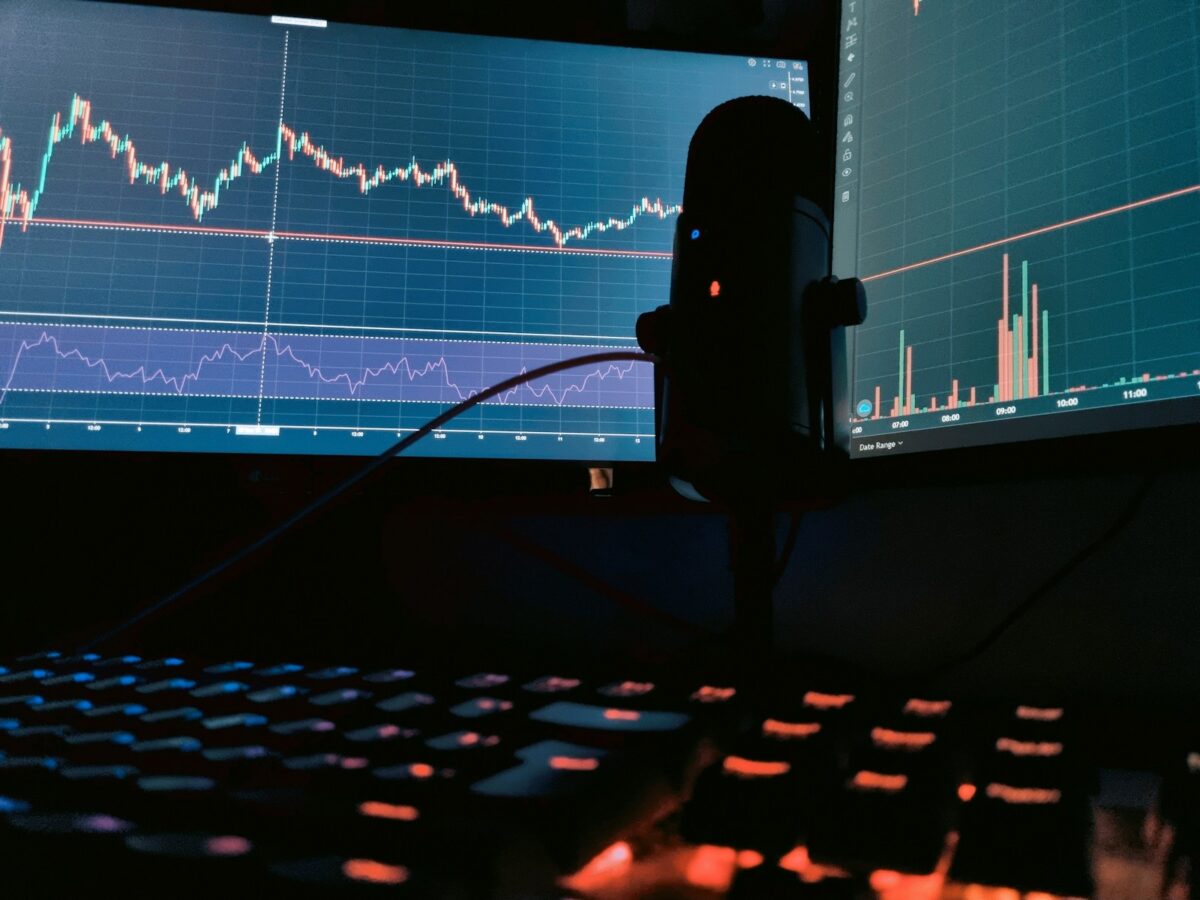
Fake crypto exchanges

Due diligence is the most effective method to avoid platforms lacking a valid license. Many deceptive trading venues operate without regulatory approval, increasing risks for investors. Verifying the legal status of any trading platform before interaction provides a critical layer of protection.
The absence or falsification of official documentation often signals fraudulent operators. Rigorous verification processes conducted by reputable services help distinguish trustworthy entities from impostors. Users should prioritize platforms with transparent compliance procedures and visible credentials.
Analyzing the reputation of a marketplace through independent reviews and community feedback contributes substantially to informed decision-making. Extensive research, including cross-checking multiple sources and comparing technical safeguards, reveals inconsistencies that may indicate malpractice.
Avoiding platforms that lack clear operational history or exhibit suspicious activity patterns can prevent significant financial losses. Consistent application of investigative criteria ensures enhanced security when engaging with digital asset intermediaries.
Fake crypto exchanges
Verification processes are the first line of defense against fraudulent trading platforms. Reliable operators implement multi-level user identification that complies with stringent Know Your Customer (KYC) and Anti-Money Laundering (AML) standards. Absence or superficial application of these procedures often signals a lack of genuine oversight, increasing vulnerability to scams. Traders should rigorously confirm whether a platform demands valid government-issued identification and performs cross-checks before permitting transactions.
Regulatory adherence is a critical benchmark when assessing the legitimacy of digital asset marketplaces. Licensed entities operate under jurisdictional frameworks that impose operational transparency and consumer safeguards. The presence of an authentic regulatory license, verifiable through official registries, distinguishes reputable services from deceptive ones which often falsely advertise compliance. Diligent scrutiny of such credentials prevents engagement with unregulated entities prone to abrupt closures or theft.
Identifying Indicators Through Research and Reputation
A well-established reputation, supported by user reviews and independent audits, functions as a reliable metric for evaluating marketplace integrity. Comprehensive research into a platform’s history–including security incidents, withdrawal policies, and customer support responsiveness–provides empirical data for informed decision-making. Experimental approaches include test trades with minimal funds to verify withdrawal speed and service quality firsthand before committing larger investments.
Protection mechanisms extend beyond verification and regulation; they incorporate technological safeguards such as two-factor authentication (2FA), cold storage for assets, and encrypted communication protocols. Platforms lacking these technical defenses expose users to higher risks of unauthorized access and asset loss. Investigating the security architecture via whitepapers or third-party penetration tests reveals the robustness of protective measures implemented.
Case studies highlight how certain fraudulent operations mimic legitimate platforms by cloning interfaces yet fail in backend transparency and fund segregation practices. For example, analysis of phishing schemes shows attackers replicate user dashboards but redirect deposits to untraceable wallets. This underscores the importance of verifying wallet addresses through multiple channels and maintaining skepticism toward unsolicited links or downloads.
The experimental mindset recommended here involves continuous monitoring post-registration: tracking transaction confirmations on blockchain explorers, analyzing fee structures for hidden charges, and comparing pricing feeds against multiple sources to detect manipulation attempts. Such diligence empowers traders to distinguish between trustworthy operators and those designed solely for deceitful gain.
Identifying Scam Exchange Features
Verification of regulatory compliance stands as the primary defense against fraudulent trading platforms. Legitimate operators possess valid licenses issued by recognized financial authorities, which can be cross-checked through official registries. Absence of such documentation or unverifiable credentials often signals a lack of adherence to regulation, increasing the risk of illicit activity. Thorough research into licensing details is essential before engaging with any trading interface.
Reputation analysis offers valuable insights into platform reliability. User feedback aggregated on independent forums and review sites provides empirical data on transaction transparency, withdrawal processes, and customer support quality. Platforms lacking verifiable histories or exhibiting predominantly negative reports warrant caution. Employing due diligence in assessing community sentiment reduces exposure to deceptive services.
Technical Indicators and Operational Transparency
Robust protection mechanisms characterize trustworthy trading venues. Implementation of two-factor authentication (2FA), cold storage for assets, and end-to-end encryption contribute to safeguarding user funds and personal data. Investigating whether a platform publicly discloses its security protocols allows for an informed evaluation of protective measures in place.
Verification procedures during account creation reflect operational integrity. Rigorous Know Your Customer (KYC) processes involving identity confirmation help prevent fraudulent accounts and money laundering activities. Platforms that bypass or simplify these steps may prioritize rapid user acquisition over security, serving as a red flag for potential scams.
- License verification: Confirm through regulator databases (e.g., FCA, SEC)
- User reviews: Analyze aggregated ratings from multiple sources
- Security features: Check for 2FA, SSL certificates, cold wallets
- KYC enforcement: Assess depth and strictness of identity checks
The degree of regulatory oversight varies by jurisdiction but remains a critical benchmark for legitimacy. Entities operating under stringent frameworks must comply with capital requirements, reporting obligations, and dispute resolution mechanisms. Evaluating these parameters reveals the extent of external supervision influencing platform conduct.
Diligence extends to monitoring transactional transparency. Reliable interfaces provide audit trails accessible to users or third-party verifiers, enabling tracking of fund flows within the system. Absence of clear transactional records impedes accountability and facilitates concealment of malpractices. Encouraging experimentation with small deposits can serve as practical tests before committing significant resources.
Verifying Exchange Legitimacy Tools
Verification of a trading platform’s authenticity begins with assessing its regulatory compliance and licensing status. Platforms operating under recognized financial authorities provide a foundational layer of protection by adhering to mandatory standards designed to prevent fraud and malpractice. Checking official registries from entities such as the Financial Conduct Authority (FCA), the U.S. Securities and Exchange Commission (SEC), or relevant regional regulators offers a direct method to confirm whether an entity holds valid authorization to operate within certain jurisdictions.
Diligence extends beyond mere license verification; reputation analysis plays a critical role in identifying trustworthy operators. Utilizing tools that aggregate user feedback, historical performance data, and incident records helps differentiate legitimate services from deceptive platforms. For example, blockchain analytics firms often monitor transaction patterns that may indicate manipulative behavior or withdrawal issues, providing technical insights that complement traditional due diligence processes.
Technical Frameworks for Authenticity Verification
Advanced legitimacy verification incorporates decentralized identifiers (DIDs) and on-chain proof mechanisms which link a platform’s identity directly to blockchain records. These technologies enable real-time validation of operational claims without reliance solely on centralized databases. An experimental approach involves cross-referencing smart contract addresses associated with asset custody against public blockchain explorers, confirming transparent asset management practices.
Additional protective measures include employing multi-factor authentication protocols and encrypted communication channels certified by recognized standards like ISO/IEC 27001. Combining these with continuous monitoring systems that flag suspicious activity enhances overall security posture. Researchers have demonstrated through case studies how layered verification frameworks significantly reduce exposure to fraudulent marketplaces while empowering users with actionable intelligence for informed decision-making.
Protecting Funds During Trading
Conducting due diligence before engaging with any trading platform is a fundamental step for safeguarding assets. Detailed research into the platform’s background, including its operational history and user feedback, reveals critical insights about its reputation. Platforms with transparent leadership teams, verifiable track records, and positive community engagement typically present lower risks. Verifying these details through independent sources strengthens confidence in the platform’s legitimacy.
Verification procedures implemented by a trading venue serve as an initial layer of protection. Robust Know Your Customer (KYC) and Anti-Money Laundering (AML) protocols reduce exposure to fraudulent activity. Ensuring that the platform enforces multi-factor authentication (MFA) and wallet segregation further limits vulnerabilities. These measures not only protect individual accounts but also contribute to systemic security by deterring malicious actors.
Evaluating Platform Integrity Through Regulation and Transparency
The presence of effective regulatory oversight provides an additional safeguard against scams. Licensed operators subject to compliance audits demonstrate adherence to established financial standards. For example, platforms regulated by recognized authorities such as the Financial Conduct Authority (FCA) or other regional bodies must maintain capital reserves and submit periodic reports, which enhances fund safety. Absence of such regulation often correlates with increased risk levels and requires heightened scrutiny.
A comparative analysis reveals that venues with open-source codebases or published audit reports tend to offer improved transparency. Technical reviews conducted by third-party cybersecurity firms can uncover backdoors or vulnerabilities exploited in past incidents. Case studies from recent years illustrate how compromised platforms lacking external auditing suffered significant breaches leading to irreversible asset losses.
Diligent traders should employ systematic verification techniques beyond surface-level checks. This includes cross-referencing domain registration data, assessing social media authenticity, and monitoring forum discussions for patterns indicative of deceptive practices. Utilizing blockchain analytics tools enables tracking transaction flows associated with suspicious entities, providing empirical evidence to inform trust assessments.
In conclusion, protecting funds during digital asset trading requires a multidimensional approach combining thorough investigation, evaluation of security protocols, adherence to regulatory frameworks, and continuous monitoring for irregular activities. By fostering informed skepticism and leveraging technical resources for validation, participants can significantly mitigate risks posed by fraudulent platforms while contributing to overall ecosystem integrity.
Conclusion: Reporting Untrustworthy Trading Platforms with Safety and Precision
Prioritize thorough research and diligence before reporting suspicious online trading platforms. Verification of a platform’s license and adherence to established regulation frameworks is paramount to distinguishing legitimate services from deceptive ones. Failure to perform due diligence can expose reporters to privacy risks or legal complications.
The process should incorporate step-by-step validation methods such as cross-referencing regulatory databases, analyzing smart contract audits where applicable, and monitoring user feedback on decentralized reputation systems. This multilayered approach enhances the protection of both personal data and market integrity against fraudulent operators.
Technical Insights and Future Implications
- Diligent verification: Establishing a standardized protocol for verifying operational credentials through blockchain-based registries can reduce false positives in reports.
- Regulatory integration: Automated compliance checks embedded within transaction layers could streamline identification of unauthorized entities without exposing whistleblowers.
- Privacy-preserving reporting tools: Zero-knowledge proofs and decentralized identity solutions offer promising routes for anonymous yet verifiable submission of misconduct evidence.
- Evolving machine learning models: Leveraging AI trained on behavioral patterns unique to illicit platforms enhances early detection mechanisms beyond manual scrutiny.
The broader impact involves reinforcing ecosystem trust by empowering stakeholders with transparent, secure channels for flagging non-compliant actors. As governance structures mature, integrating technological safeguards will transform how community oversight operates–shifting from reactive complaint handling toward proactive anomaly prevention. Encouraging experimental frameworks that combine cryptographic verification with regulatory cooperation presents a forward-thinking pathway for safeguarding digital asset markets against counterfeit operations while maintaining user confidentiality.


